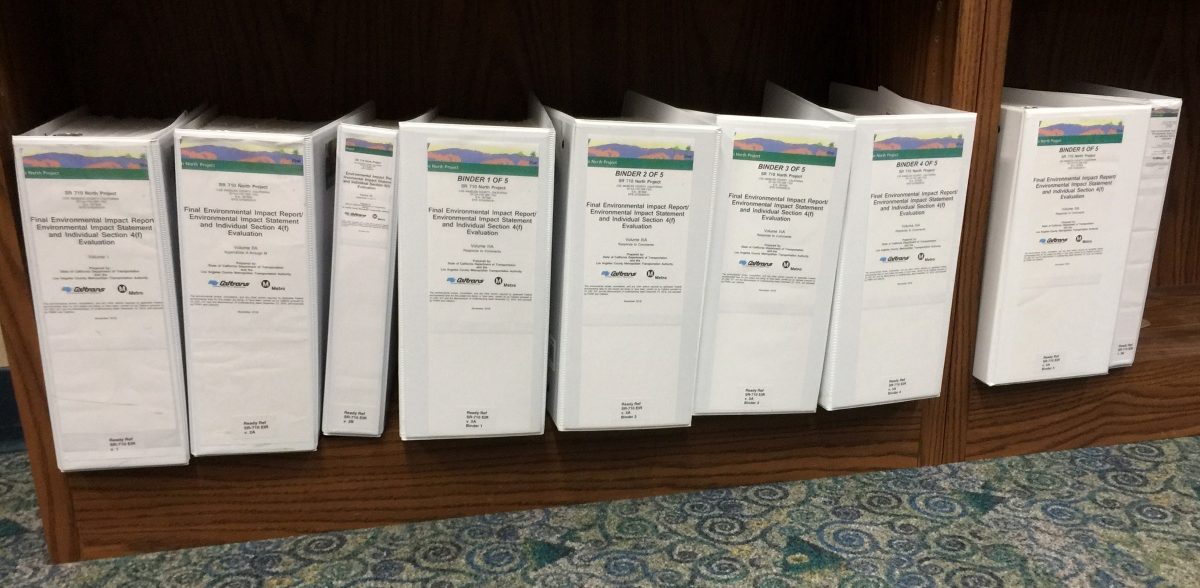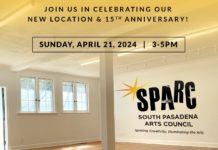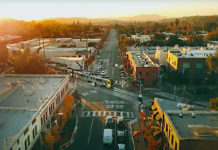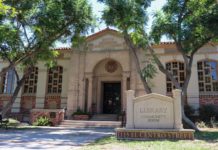
The City of South Pasadena and allied cities and groups have a window of opportunity “to gain some control” over the sale and preservation of the properties in the former SR-710 North corridor, according to a local attorney.
Longtime Caltrans tenants’ lawyer Christopher Sutton said Caltrans’ delay in issuing the final record of decision (ROD) in the SR-710 environmental review means legal action could be taken that would create leverage for cities, historic preservation groups and tenants in the development of a preservation plan Sutton says Caltrans promised for 710-corridor historic properties. That leverage could be used to promote affordable housing and to reduce the risk of fire, health and other hazards created by Caltrans’ hundreds of mostly vacant, poorly-managed houses in Pasadena, South Pasadena and El Sereno.
Caltrans won’t say why the ROD hasn’t been released.
Sutton made his case during presentations in July to the South Pasadena and Pasadena city councils.

During the July 17 presentation, South Pasadena Councilman Robert Schneider, who serves on two SR-710-related city committees, said Sutton’s legal approach “may very well be right.” The Council should consider it “to help our tenants to secure those properties and put pressure on Caltrans to move along.” But he later told the South Pasadena News that there’s “been no real interest by the Council or the City Manager” in pursuing the matter.
Councilwoman Diane Mahmud warned her colleagues against being overly optimistic. “I don’t want to give people the impression that there is this golden opportunity to take over for Caltrans the entire sale of the properties, because I don’t believe there is any legal basis whatsoever to do that.”
Joanne Nuckols, chair of South Pasadena’s Freeway and Transportation Commission–where the delay of the ROD has been a hot topic–said the city’s previous litigation with Caltrans serves as precedent for Sutton’s strategy. Twenty years ago this week, a federal judge ruled transportation authorities could not proceed with any activity under the 1998 SR-710 ROD because that ROD was not valid. The Federal Highway Administration (FHWA) subsequently withdrew the ROD in 2003. Today, “there is leverage for the city to step up and be a leader again to do something about the historic properties.”
No one wants to rush into a lawsuit, Nuckols said. Rather, litigation would ensure only if Caltrans fails to produce an adequate historic preservation plan. Her commission has asked the city to hire an attorney to explore the issue and write Caltrans a letter to make sure the preservation plan is done right.
Sutton explained that this time around, the FHWA delegated its environmental review authority over SR-710 North to Caltrans, allowing the latter to serve as the lead agency for both the California Environmental Quality Act (CEQA) and the National Environmental Protection Act (NEPA) reviews, final versions of which Caltrans released on November 26.
Then on February 5, Caltrans formally completed the CEQA process by issuing a “Notice of Determination” (NOD) adopting the Transportation Systems Management/Transportation Demand Management (TSM/TDM) option as the preferred alternative to a 710 North tunnel. Sutton told the city councils that when it issued the NOD, Caltrans promised to adopt a “historic preservation plan.”
Meantime the formal end of the NEPA process requires a ROD, which Caltrans has not yet published. Sutton notes that under Section 4(f) of the 1966 US Department of Transportation Act, FHWA is required to consider historic sites impacted by decisions it makes. He speculates the ROD hasn’t been issued because the agencies have not agreed on the Section 4(f) requirements.
“Because federal law is stronger on historic preservation than state law, I believe Caltrans is stuck and can’t get the ROD published by the FHWA.” Consequently, prospective plaintiffs have an opportunity through legal action to force Caltrans to accept favorable settlement terms in lieu of being found in violation of the law.
“Caltrans is vulnerable,” Sutton said. He believes the agency is already in violation of the law and any preservation plan it does produce would be deficient. That’s because it doesn’t have money to pay for any projects it proposes, he told the South Pasadena News.
There are reports that the ROD has been drafted but is awaiting a final okay from Caltrans District 7 Director John Bulinski.
Mike Comeaux, a Caltrans spokesman, confirmed the draft is done but said it is nonetheless still under review. There is no estimate for when it may be released, though it there is a meaningful deadline of 36 months after the Nov. 26 announcement of the FEIR/EIS. He did allow that the review has a “current focus” but said details of that focus “haven’t been made available for public distribution.”
Caltrans also said the section of the NOD Sutton says contains Caltrans’ promise for the historical preservation plan (“CUL-12”) pertains only to the Arroyo Seco Parkway Historic District, which consists of the Pasadena Freeway and the Arroyo Seco Channel from downtown L.A. to E. Glenarm St. It is not a residential area and has no overlap with the Caltrans-owned homes in the SR-710 corridor. Caltrans also stated that the “property specific” plan referred to in CUL-12 won’t begin until the final design phase for the freeway ramp improvements at Fair Oaks Ave.
Lastly, the agency asserted that all the substantive material it intends to release in relation to Section 4(f) is already contained in the Nov. 26 final environmental document.
Doug Hecox, a spokesman for FHWA in Washington D.C., said FHWA is not reviewing the ROD. It did not “delegate” but “assigned” its NEPA authority to Caltrans under a special program. That means Caltrans has full authority to create and release all relevant NEPA documents, although only FHWA can actually submit the ROD for publication in the Federal Register.
“They are in charge of all of it. We are not even allowed to be involved in providing them suggestions,” except in rare circumstances. Caltrans has not asked anything of FHWA and “it is unlikely they will.” He said it is for Caltrans to ensure the ROD “is right, defensible and that the public has an opportunity to weigh in.”
Two days after release of the SR-710 FEIR/EIS on Nov. 26, FHWA promulgated new NEPA guidance clarifying that it can substitute the preferred alternative in a FEIR/EIS with any alternative that was fully evaluated in the draft EIS, which could delay ROD issuance.
Experts say RODs can also be delayed if the lead agency is slow, still reviewing comments, or making substantive changes. Caltrans got six comments on the FEIR/EIS from the West Pasadena Residents’ Association, the US Environmental Protection Agency, the National Trust for Historic Preservation, the South Pasadena Preservation Foundation and a letter signed by the cities of Alhambra, Pasadena and South Pasadena.
It is also worth mentioning that in February, the White House issued new guidance for “assigned” NEPAs pursuant to an August, 2017 executive order aimed at shortening the NEPA review process.
Due to an unrelated lawsuit, none of Caltrans’ environmental documents are currently available on its website.




















.png)










Funny that these houses that are for rent are going to peoples friends who work for cal trans….. sounds fishy to me
Those pesky pending lawsuits and investigations always seem to hold up transparency at every level. #vanessamarquez